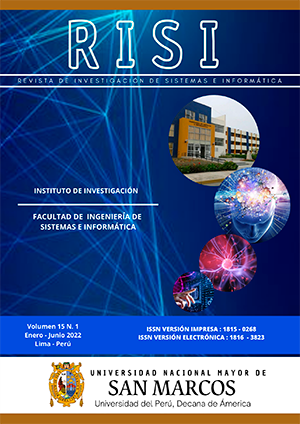Analysis of the educational system of Peru and its impact with the Digital Transformation
DOI:
https://doi.org/10.15381/risi.v15i1.23354Keywords:
educational system, digital transformation, digital literacy, digital divideAbstract
This research work presents a systematic review whose objective is to analyze the educational system of Peru and the impact it had with the Digital Transformation, the same one that was accelerated by the COVID-19 pandemic. The analysis carried out, and its subsequent result and discussion, fall on 3 important pillars that have been considered: online services, telecommunications infrastructure and human capital. Each of these pillars has been reviewed based on existing documentation, such as research papers, press releases, bills, ministerial resolutions, strategic solutions, among others. Likewise, these pillars have been analyzed in different periods of time so that we can show the changes they have experienced, for example, before and after the pandemic. The first results show us that access to quality education was reduced with tele-education during the pandemic, despite the fact that teacher participation in pedagogical training programs, especially related to Information and Communication Technologies, increased approximately by 50% compared to the last 4 years. Similarly, high-speed Internet access through the National Fiber Optic Dorsal Network did not have the expected results and, on the contrary, generated millionaire losses for the State for many years.
Downloads
Downloads
Published
Issue
Section
License
Copyright (c) 2022 Jose Luis Vidal Noblecilla, Juan Piero Santisteban Quiroz, Kuking Ñahui Panllo

This work is licensed under a Creative Commons Attribution 4.0 International License.
AUTHORS RETAIN THEIR RIGHTS:
a. Authors retain their trade mark rights and patent, and also on any process or procedure described in the article.
b. Authors retain their right to share, copy, distribute, perform and publicly communicate their article (eg, to place their article in an institutional repository or publish it in a book), with an acknowledgment of its initial publication in the Revista de investigación de Sistemas e Informática.
c. Authors retain theirs right to make a subsequent publication of their work, to use the article or any part thereof (eg a compilation of his papers, lecture notes, thesis, or a book), always indicating its initial publication in the Revista de investigación de Sistemas e Informática (the originator of the work, journal, volume, number and date).


